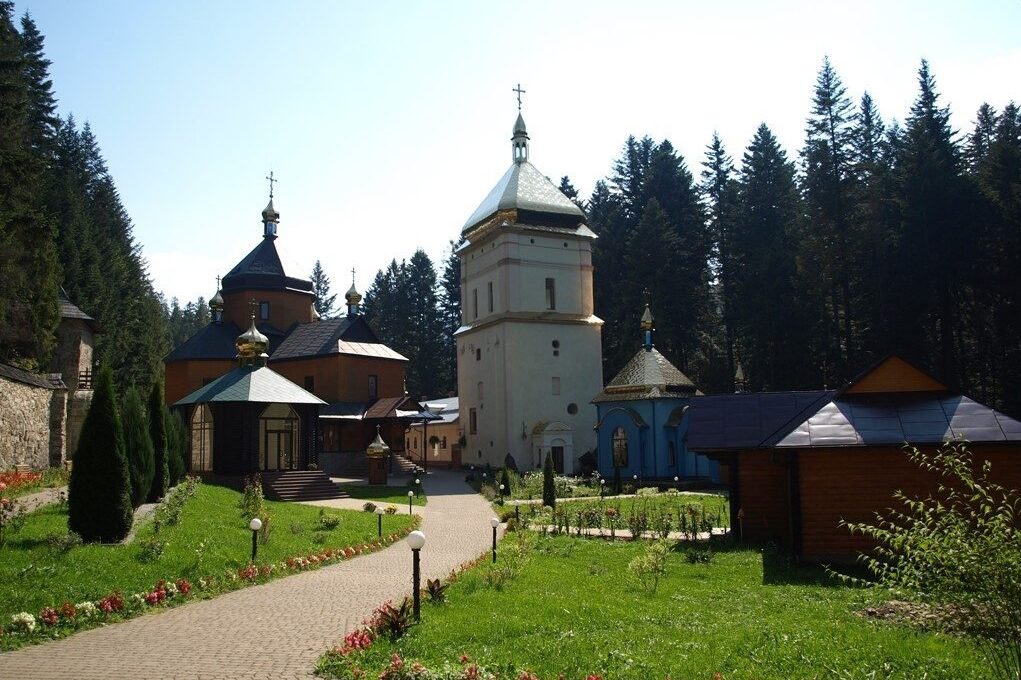Maniava Skete is an orthodox monastery, construction of which was initiated by Ivan Knyahynytskyi in 1606 on the bank of the Manyavka river.
According to a legend, the monastery was set up in 1240 by monks who left Kyiv during the Mongol invasion. Their first settlement was near the sacred spring under the Blessed stone. The Rus princes came here to be blessed by those monks. Soon they abandoned the place. Its revival at the beginning of the 17th century is related to the monk named Ivan Knyahynytskyi.
In 1621 Maniava Skete got the status of a stauropegic monastery and it used to manage more than five hundred monasteries in Galicia, Bukovyna and Moldova. Architectural complex of stone and wooden buildings perfectly fits in the mountainous terrain. The monastery was enclosed by a wall of stone and three fortified towers which served as hiding places for neighboring villagers during the Crimean-Nogai raids. In 1785 the Skete was closed down for an order of the Austrian government because of Joseph II’s religious reform. For some period it was the cultural center in Galicia. There was a large library, it was popular for the main iconostasis designed by Ivan Kondzelevych, the Ukrainian artist. After its closing, the iconostasis was transferred to a church in Bohorodchany, and since 1924 it has been in the Lviv National Museum.
In 1998 Manyava Skete of the Exaltation of the Hole Cross was established here.


![Манявський-монастир10-1024×768[1]](https://woodenroute.ekarpaty.com/wp-content/uploads/2021/10/manyavskyj-monastyr10-1024x7681-1.jpg)